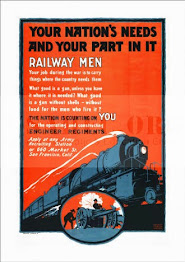737th Railway Operating Battalion - Morgan W. Colquett
Monday, September 25, 2023 | Labels: 737th Railway Operating Battalion, Philippines | 0 Comments
On their war to war: 729th ROB lines up at buses in 1942
Friday, September 22, 2023 | Labels: 729th Railway Operating Battalion | 0 Comments
790th Railway Operating Battalion -Michael Walter Matlosz
Thanks to Tom for sharing these great photos of his dad, Michael Walter Matlosz.
Obituaries: Michael W Matlosz, 77 Jersey Journal, The (Jersey City, NJ) - Wednesday, July 14, 1999
Mass for Michael W. Matlosz, 77, a lifelong resident of Bayonne, will be Friday at 9 a.m. at Our Lady of Mount Carmel Church, Bayonne. He died Monday in St. Barnabas Medical Center, Livingston. Matlosz was an Army veteran of World War II. He was received the Asiatic Pacific Theatre Ribbon with two Campaign Stars, the Philippine Liberation Ribbon with one Battle Star, and the Meritorious Unit Plaque. Matlosz was a chemical operator for Allied Chemical Corp., Elizabeth, for 22 years, retiring 13 years ago.
He was a member of F.A. Mackenzie American Legion Post 165, Bayonne. Surviving are his wife, Nellie T.; two sons, Michael Mark and Thomas K.; two daughters, Maureen M. and Debbie D. Kocher; a sister, Jean Jadlowski; a brother, John; and five grandchildren. Dworzanski & Son Funeral Home, Bayonne, is in charge.
Friday, September 15, 2023 | Labels: 790th Railway Operating Battalion, photos | 2 Comments
729th Railway Operating Battalion in Antwerp Belgium 1944
Men from Company C, 729th Railway Operating Battalion, operate a British War Department made Austerity locomotive in a railyard at Antwerp, Belgium, 1944
Wednesday, September 06, 2023 | Labels: 729th Railway Operating Battalion, Antwerp | 0 Comments
727th Railway Operating Battalion in Algeria on 17 February 1943
An old French steam locomotive is seen being operated by men of the 727th Railway Operating Battalion in Algeria on 17 February 1943
.Just a little less than a year before in March of 1942 the 727th ROB was the first railway battalion activated in World War II. Soldiers of the 727th were established at Camp Shelby, Mississippi, to train on the Southern Railroad between Meridian, Mississippi, and New Orleans, Louisiana.
In September 1942, a detachment of men from the 727th Railway Operating Battalion became the first military railroaders to deploy outside the contiguous United States when they assumed operations of the White Pass and Yukon Railroad in Alaska. Then the 727th was one of the first two battalions to deploy overseas, arriving in North Africa in December 1942. Railroading in North Africa proved to be challenging. Trains were operated by British, French, and American crews assisted by Arab civilians.
With a variety of languages among the railroaders, the crew often used hand signals, although that was not always a solution. For example, the U.S. signal for “go” in railroad terms meant “stop!” in the French system used in North Africa. Another quirk was that French locomotives in North Africa did not have seats for engineers or firemen as American ones did, so crews had to stand for hours on end while they were underway.
In spite of the difficulties, the Military Railway Service (MRS) moved about 90,000 tons of freight a week by June 1943. At its peak the MRS operated 1,905 miles of railway in North Africa. After freeing North Africa from German occupation the Allies’ next move was to Sicily, and MRS personnel went with them. Three days after the initial landings on 10 July 1943 the 727th Railway Operating Battalion went ashore at Licata, Sicily, and immediately began work on the Sicilian railway. Thanks Military Railroad Society https://www.facebook.com/usatc5002
Friday, September 01, 2023 | Labels: 727th Railway Operating Battalion, locomotives | 0 Comments







